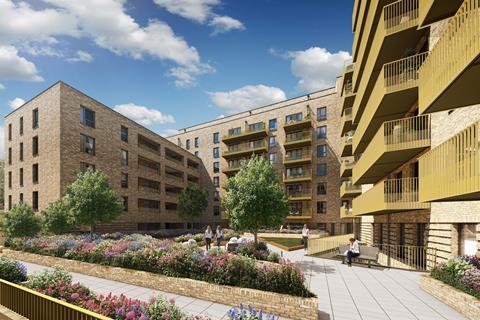When mayor of London Sadiq Khan announced the process of residents’ ballots almost two years ago, we embraced the policy, which aligned with our ethos of putting residents first, despite cynicism about its merits in the broader industry.

The concern was that ballots would slow down and prevent regeneration. But since July 2018, residents’ ballots have achieved a 100% success rate and no scheme has stalled – including none of our own, with our most recent success being the Cambridge Road Estate in Kingston.
Councils, housing associations and developers are working more closely than ever to ensure that each estate regeneration scheme is treated sensitively and at a swift pace. The process is by no means easy, but we saw it as an opportunity to develop deeper relationships with residents and community stakeholders on regeneration projects that could take decades to complete.
Community engagement is critical, and we have cultivated new ways to engage with those that matter the most. Our approach has gone far beyond public exhibitions; ballots encourage engagement with every household – and this demands a broad range of communication methods and significant resources, as often the best quality conversations take place on a resident’s doorstep.
Following up with detailed plans is the logical next step, but the most crucial step is to obtain feedback. Developers are often too eager to sell their concepts, but it’s the residents, some of whom have lived there for decades, who have real insight into and knowledge of the place, the community and its needs.

Our teams often take many residents to other schemes we have built to showcase how estate regeneration is positive if executed properly. This is an effective way of overcoming residents’ concerns and obtaining quality feedback.
This has ensured that we find ways to meet the challenges of tomorrow. While new green spaces and community centres play a valuable role in regenerating a neighbourhood, futureproofing a scheme is also crucial – especially in terms of transport infrastructure, data, health and wellbeing.
In a post-Covid world, how can we ensure large-scale regeneration schemes keep residents safe and ease the constraints of future pandemics we might face? We must implement long-term stewardship programmes with strong local governance to ensure the work we do is for the community and is treasured by generations to come.
Is now the time to digitise the ballot process to ensure there are no delays in approvals? This is an opportunity to find solutions to ensure we continue our promise to deliver much-needed homes in often-forgotten communities in and around the capital.
We must evolve as an industry, and this means constantly measuring and evaluating the processes and impact of the residents’ ballot.
Headline numbers on turnout and success rate are simply not effective. Rather, we must challenge ourselves and our partners and review and evaluate every step of this process to create truly sustainable communities that genuinely serve the needs of their residents today and tomorrow.
Iain McPherson is group chief executive of Countryside






























No comments yet